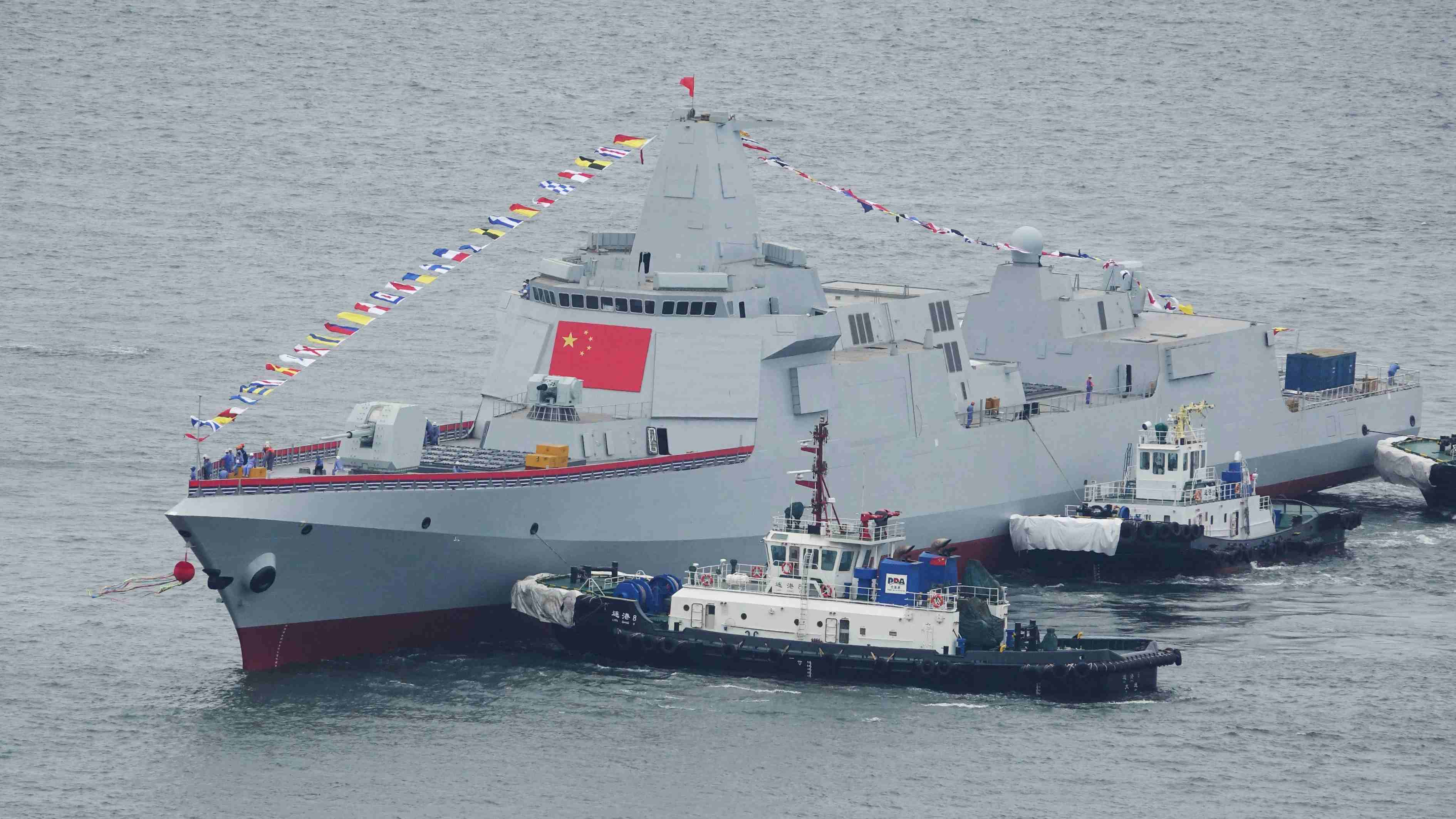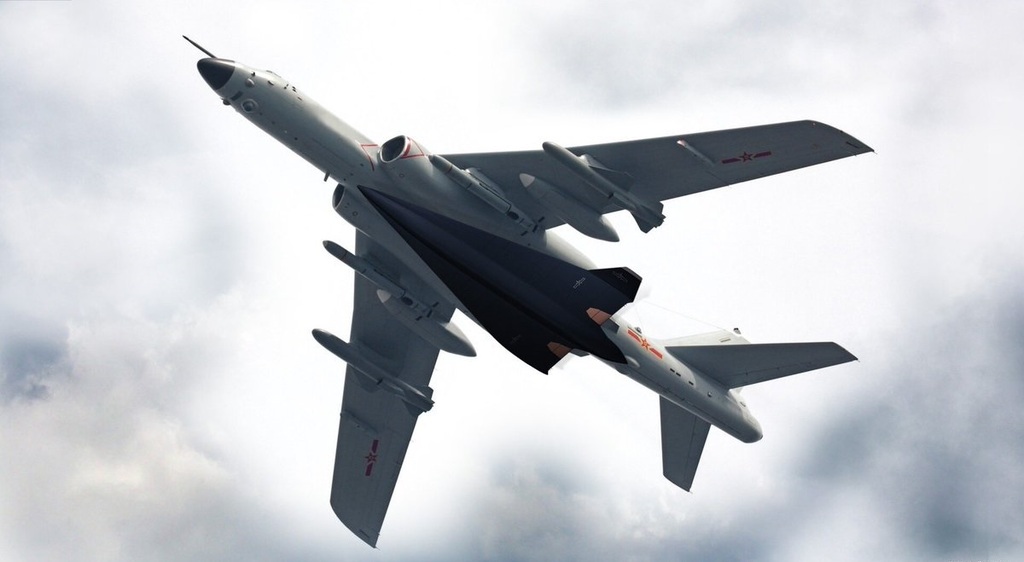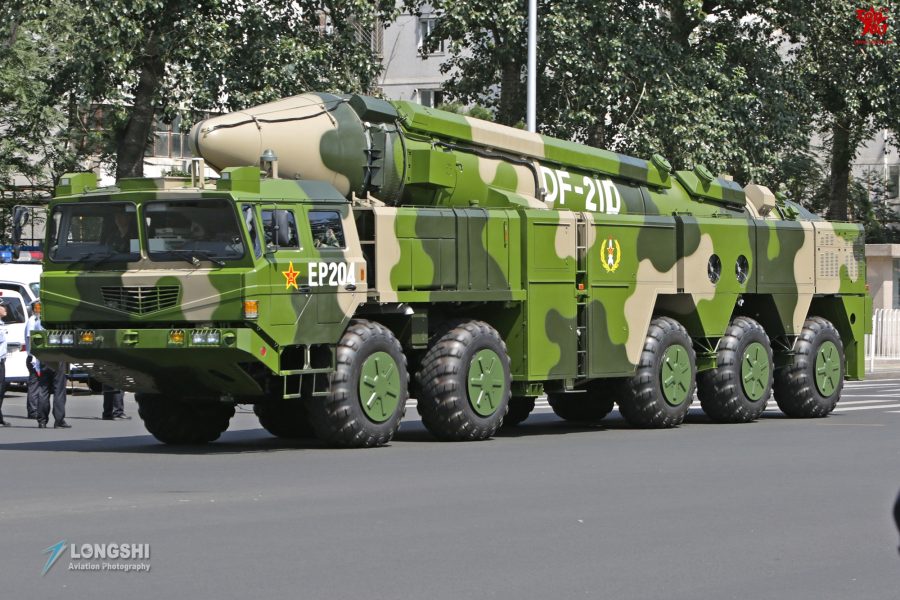Anti-ship missiles are an important part of China’s anti-access/area-denial (A2/AD) capabilities. These missiles can provide PLA a ‘home advantage’ by blocking the adversarial navies from accessing contested regions along China’s coast.
One of the most lethal weapons in the Chinese armory is the YJ-21 anti-ship ballistic missile which remains shrouded in mystery.
However, in an unprecedented development, the People’s Liberation Army Navy (PLAN) has released what appears to be the first video footage of a Chinese warship, the Type 055 cruiser, firing a YJ-21 hypersonic anti-ship ballistic missile.
The YJ-21 hypersonic anti-ship ballistic missile in the video is related to the CM-401 developed by China, according to naval analyst H.I. Sutton. With 112 Vertical Launching System (VLS) cells, the Type 055 could carry a sizable hypersonic arsenal in a high-end battle.

Earlier, the weapon manufacturer CASIC had stated that the missile could be deployed aboard a ship like the PLAN’s Type 055 cruiser, which is the vessel class featured in the recently published visuals.
Using a “skip-glide” flight pattern, the missile has a range of at least 180 miles. This implies that it flies virtually straight up in the beginning, and then skips off the atmosphere one or more times upon re-entry, turning its downward momentum into horizontal motion.
The Chinese PLA Navy for the first time showed footage of the launch of a new hypersonic anti-ship cruise missile from a Project 055 destroyer. pic.twitter.com/Tdb6cz3UNR
— rohan panchigar (@rohanpanchigar) April 19, 2022
The US Congressional Research Service (CRS) report on China’s naval capabilities had earlier noted that “China reportedly is also developing hypersonic glide vehicles that, if incorporated into Chinese ASBMs, could make Chinese ASBMs more difficult to intercept.”
The United States does not currently have an anti-ship ballistic missile similar to the ones operated by China. The US Navy is apparently collaborating with the US Army on the Conventional Prompt Strike (CPS) hypersonic missile system, which will be launched from land, ship, and submarine platforms.
The US has a range advantage for ship-launched weapons: the Tomahawk Block Va and Vb cruise missiles that have a range of more than 1,000 nautical miles, though they are subsonic and hence easier to defeat.

While this video ended up creating ripples among military watchers, there was another YJ-21 visual released on social media atop the Xian H-6N bomber that excited netizens. The missile has been kept away from the public gaze by the Chinese military.
Xian H-6N with YJ-21 ASBM
Another video has surfaced on the internet that provides an extraordinary glimpse of a Chinese People’s Liberation Army Air Force (PLAAF) Xian H-6N bomber carrying an air-launched anti-ship ballistic missile, or ASBM. This missile, also known as the CH-AS-X-13 in the West, is still a mystery in many aspects.
The massive missile shown on the H-6N’s centerline appears to be related to the YJ-21, or Eagle Strike 21, a ship-launched version of the ground-based DF-21D, another anti-ship ballistic missile that supposedly went operational in 2010.
Wow ? and as if the new Eagle Strike 21 (YJ-21) AShBM was not enough, also the so far clearest image of a PLAAF H-6N carrying the huge ballistic missile!
(via a video via @lqy99021608) pic.twitter.com/R0jKlH0uBd
— @Rupprecht_A (@RupprechtDeino) April 19, 2022
The DF-21D missile, dubbed the “carrier killer,” initially follows a ballistic trajectory similar to that of a strategic nuclear missile, then leaves the atmosphere and re-enters it to release a re-entry vehicle that propels down to hit an aircraft carrier.
The Western CH-AS-X-13 designation denotes a weapon in the early stages of development. According to the US Defense Intelligence Agency’s China Military Power assessment from 2021, the H-6N is currently operationally fielded, yet the same document makes no mention of the missile’s status.
The markings on the aircraft in the video suggest it could be in service, but we can’t be certain.

As per the March 8 Congressional Research Service (CRS) report on China’s naval capabilities, top US commanders think China’s arsenal of anti-ship ballistic missiles (ASBMs) can strike moving targets.
The YJ-21 or the DF-21D differs from conventional MRBMs in the way that they can maneuver dynamically during reentry and can target huge vessels during the terminal phase of flight.
The DF-21D and by virtue of that, the YJ-21 appear to be a fantastic armament system, capable of keeping US carrier strike groups far enough away from Chinese coasts to render their fighter planes and cruisers ineffective.
With a hypersonic terminal velocity typical of ballistic missiles, the DF-21D — and, by extension, the air-launched ASBM — would pose a particularly difficult danger to warship captains.

It’s essentially a carrier killer that engages at hypersonic speeds and severe angles of descent, rendering most typical defensive weapons ineffective. Depending on its stage of flight, even modern anti-ballistic missile capabilities would struggle to intercept a DF-21D.
China’s ‘Anti-Access/Area Denial (A2/AD)’ doctrine has influenced the development of ultra-long-range weapons systems capable of knocking out adversary platforms from afar while avoiding close combat.
China has created missiles that outrange any US weapon in that class, based on the principle of “not allowing the enemy to reach near the mainland.” The DF-21D and the YJ-21 are based on the same philosophy.
- Contact the author at sakshi.tiwari9555@gmail.com
- Follow EurAsian Times on Google News




